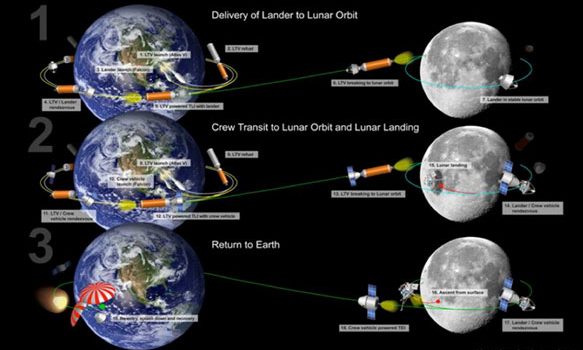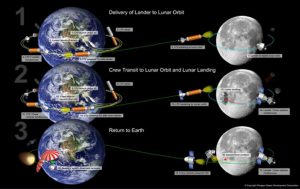
On December 6, Golden Spike formally introduced itself. The company, named after the railroad spike that heralded a new era of transportation with the completion of America’s transcontinental railroad, pledges trips to the Moon starting in 2020, for $750 million per seat.
“The trick is 40 years old,” said Golden Spike CEO and former NASA associate administrator Alan Stern. “We know how to do this.”
The company plans to market primarily to governments looking for an opportunity to put boots on the Moon, although they are happy to provide seats to anyone willing to pay – within the limits of US law, which would prevent providing custom to, for instance, the Chinese. There is a general consensus that Golden Spike might actually have the technical chops to pull this off, with a staff list that reads like a vertiable who’s who of NASA greats, and a Board of Advisors that ranges from notorious lunar base advocate, politician Newt Gingrich to Mike Okuda, the creative director behind Star Trek and inventor of that show’s “Heisenberg Compensator”.
Although $750 million per seat – $1.5 billion for a two seater mission – sounds like alot, it is comparatively inexpensive for a crewed space mission, about equivalent to a robotic science mission. The company anticipates no problems filling seats. “Get in line,” Stern told Space.com. “I think it’s going to be a long one.”
Golden Spike has not yet selected a launch vehicle and denied rumors that it was partnering with SpaceX to use the Falcon Heavy. The company plans to use existing vehicles or those already under development. It will use a two-step architecture, first launching an unmanned lander to lunar orbit, then sending a crewed vessel to rendezvous with the lander. Golden Spike will commision its own lander and space suits. The latter will no doubt fall under the purvue of Board of Advisors member Jonathan Clark, a former Space Shuttle flight surgeon who has recently been advancing pressure suit technology in his work with Felix Baumgartner‘s Red Bull Stratos mission.
The announcement came on the 40th anniversary of the eve of the Apollo 17 launch, the last mission to travel to the Moon. “We looked for a meaningful date, and we picked today,” Stern said. “There’s a little bit of poetry with this.” How does NASA feel about a company picking up the mantle of lunar exploration, a mantle it dropped 40 years ago? “This type of private sector effort is further evidence of the timeliness and wisdom of the Obama Administration’s overall space policy — to create an environment where commercial space companies can build upon NASA’s past successes, allowing the agency to focus on the new challenges of sending humans to an asteroid and eventually Mars,” NASA spokesman David Weaver said in a written statement. If all goes according to plan, Golden Spike will be sending the first commercial crewed mission to the Moon about the time that NASA is launching its repeat robotic mission to Mars.
Below, Golden Spike’s promotional video unveiling the company:


















































































































![A trajectory analysis that used a computational fluid dynamics approach to determine the likely position and velocity histories of the foam (Credits: NASA Ref [1] p61).](http://www.spacesafetymagazine.com/wp-content/uploads/2014/05/fluid-dynamics-trajectory-analysis-50x50.jpg)



Leave a Reply